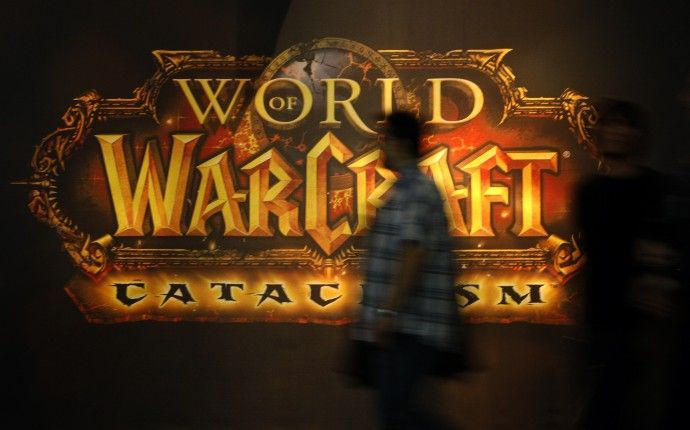Video Game Publishers Move Unevenly Into Digital

Following the lead of other entertainment sectors, publishers of video games are more reliant on digital-revenue streams as retail sales slide, but their rapidly changing industry poses plenty of new challenges.
Physical video game sales were down 34 percent year-over-year in January to $750.6 million, according to market research firm NPD Group. Weak consumer activity and a lack of major releases were a drag on January's numbers, and retail sales of games have fallen in 28 of the 35 months since a March 2009 peak.
However, NPD estimated that secondary revenue -- rentals, digital downloads, social games and mobile-device apps -- added $350 million to $400 million to the industry's total sales last month.
Despite retail-sales declines, some of the sector's major players posted big profits in the most recent quarter, thanks largely to digital growth.
Electronic Arts Inc. (EA), one of the biggest video game publishers, had fiscal third-quarter revenue of $1.06 billion, up from $1.05 billion a year earlier. Digital revenue was $377 million, a year-on -year increase of 79 percent. EA's full-year digital revenue topped $1 billion for the first time.
The company's latest soccer game, FIFA 12, brought in $50 million in digital revenue during the quarter, and its Sims Social and PopCap divisions also contributed to growth. During the quarter, EA saw 9.3 million registered users for Origin, its online store that sells games and additional content from EA and other publishers. Downloadable content, or DLC, provides an additional revenue source from highly engaged gamers, who pay for additional features or add-ons to existing titles.
But analysts wonder if the new products will be enough to offset some of EA's more stagnant products, such as the Madden NFL and Need for Speed franchises.
Management is trying to offset the revenue and profit loss by extracting additional dollars from existing franchises via the sale of high-margin digital add-ons that increase customer engagement, wrote Sunit Gogla, an analyst with Morningstar, in a December research note. We agree that such add-ons offer an attractive profit opportunity, but the magnitude of these sales is far from sufficient to replace lost revenue and profits.
EA is hoping a new blockbuster will lift the company's earnings this year. In December, it launched Star Wars: The Old Republic, an ambitious massively multiplayer online (MMO) role-playing game developed by the company's Bioware division that cost $200 million to produce. The game holds a Guinness World Record for largest entertainment voice-over project, containing more than 200,000 lines of recorded dialogue.
Subscribers pay around $15 a month, in addition to the game's $49.99 retail price. Since launch, the game has attracted 2 million subscribers, but its long-term outlook remains uncertain.
We see 'Star Wars' as the wild card for fiscal 2012 performance, wrote Gogla.
EA's main rival, Activision Blizzard Inc. (ATVI), has relied on one of the most successful digital titles of all time to produce robust profits for years, but there have been decent signs of decline.
Its World of Warcraft, which debuted in 2004, lost 100,000 subscribers during the fourth quarter, but the games remain a rich source of revenue for the Activision, with 10.2 million players paying about $15 per month for access.
The company is seeking new revenue sources, launching a subscriber service for its blockbuster Call of Duty: Modern Warfare 3 offshoot, Call of Duty Elite. As of the end of the fourth quarter, 1.5 million subscribers were paying $4.99 per month for access to the game's new downloadable content.
Activision's forthcoming Diablo III, which is targeting a second-quarter release, will attempt to use a new model for digital revenue: a real money auction house where players sell the game's items for real currency. The game maker will charge a flat fee for transactions, capitalizing on deals that typically were done on unregulated third-party sites tied to previous Diablo editions. Activision is also working on a so-far-unannounced MMO game with an undisclosed revenue model.
But for companies without the strength of massive hits, the current economy can be difficult, even with the growth in digital. Publisher THQ Inc. (THQI), the fifth-largest U.S. publisher with 5.4 percent market share, has been battered by declines in its children's entertainment division, even as digital revenue more than doubled in the fiscal third quarter. The Agoura Hills, Calif., company plans to lay off 240 of its 1,750 employees in a restructuring. The shares have dropped from a 52-week high of $6.01 to just 61 cents as of Thursday's close, and the stock risks being delisted from Nasdaq.
Perhaps the company that has done the most to boost its digital distribution is Valve Corp., the highly regarded maker of the Half Life and Portal franchises. Aside from its own games, Valve runs Steam, an online store that offers a range of titles and content, with regular discounts to entice customers.
Valve is private and doesn't disclose sales, but it said year-over-year sales more than doubled for 2011, with over 5 million simultaneous users logged in during peak holiday-shopping week in December. It delivered 780 petabytes of data (7.8 trillion gigabytes) to users over the year.
Steam succeeds because it is so easy to buy and then play the games, said Aram Zucker-Scharff, assistant director for marketing and communications at George Mason University's Office of Student Media and writer for the game-criticism site Nightmare Mode. Because of that I'm constantly buying games, not to play right then, but because they caught my attention, happen to be on sale, and I know I'll want to play them later.
Zucker-Scharff said he buys about $50 worth of games each month.
© Copyright IBTimes 2024. All rights reserved.




















